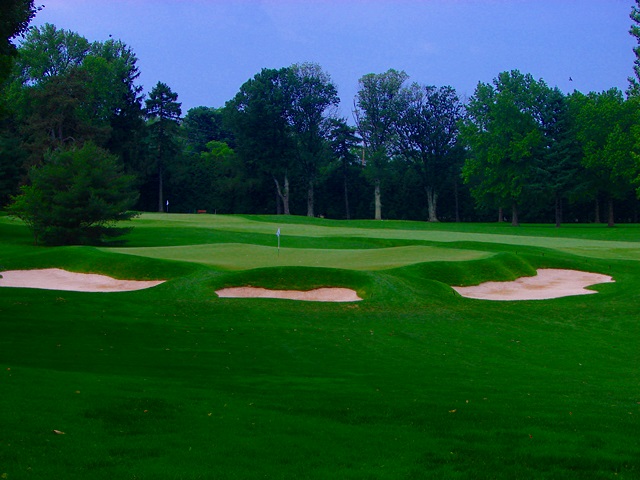Golf Course Architecture is perhaps one of my favorite things to study. The way the holes are supposed to be flawlessly cut into the natural terrain of the course is something that came from the origins of the game in Scotland. To this day, architects from 100 years ago are revered for their work and many courses are seeking to get away from modern golf course architecture in favor of “Golden Age” architecture.
First, I should probably describe what “golden age architecture” actually is. The premise, according to “The Fried Egg” (Perhaps my favorite golf blog) can be summed up by the expression “width and angles”. To further elaborate, let me use a diagram. Aronimink Golf Club was founded and designed in the early 1920’s, and recently restored to host a PGA Tour event.
As you can see, there is a significant amount of fairway width (the short grass). This allows a good player to miss the fairway and convince them that the hole will remain easy. However, the beauty of this style of golf course is the “delayed penalty”. Although the ball is in play, the angle required to get to the green makes it impossible to get the ball close to the hole. 
A good example of this is shown above. If the pin is tucked behind that front bunker, it is impossible to get enough spin on the ball to stop it close to the hole from the rough.
Now, you might be wondering what would be the other end of the spectrum. This is Purdue Kampen Golf Course, designed by every golfer’s favorite asshole, Pete Dye.
As you can see, if the ball veers even a small bit off the fairway, the player is essentially screwed. Pete Dye is known for intentionally trying to scare the absolute crap out of players. This type of golf is certainly less fun, but I’ve been forced to play it for some elite events.
Now the question remains. Why is everybody wanting to restore courses to the former architecture style. The simplest answer is enjoyability. A fantastic golfer and a crappy golfer can play the course above, not lose any balls, and enjoy the cerebral challenge of the course. In the course below, even mediocre players will be donating a cadre of balls into the local lakes. Not only does that cause dread, it makes playing golf less fun.